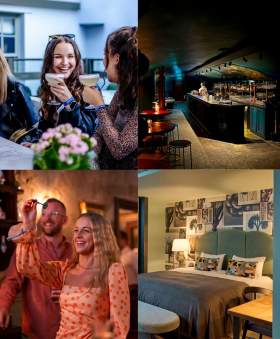Legendary engineer Isambard Kingdom Brunel is one of Bristol's icons - he may have been born in Portsmouth, but many of his greatest engineering achievements were right here in Bristol.
Two of the city's best-known attractions, the Clifton Suspension Bridge and SS Great Britain, were designed by Brunel back in the mid-1800s and still stand as a testament to his vision and skill today.
Take a Brunel-themed stroll through Bristol with the route below, uncovering tales of ambition, creativity and groundbreaking innovation.
Great Western Railway
Your journey to Bristol may take you via the Great Western Railway, which was founded in 1833 to connect London with Wales and the South West of England by rail. Brunel was appointed chief engineer of the project from the start and was involved with every element of its design, from walking the route himself to designing many of the bridges and buildings. Check the name of your train when you board - you may even be on the GWR train named after him!
One of his most impressive designs was the original Bristol station, opened in 1840, which today is the Grade I listed Passenger Shed and is the earliest surviving major rail terminus in the world, last used by trains in 1965. Engine Shed next door is still home to Brunel's original boardroom and GWR offices.
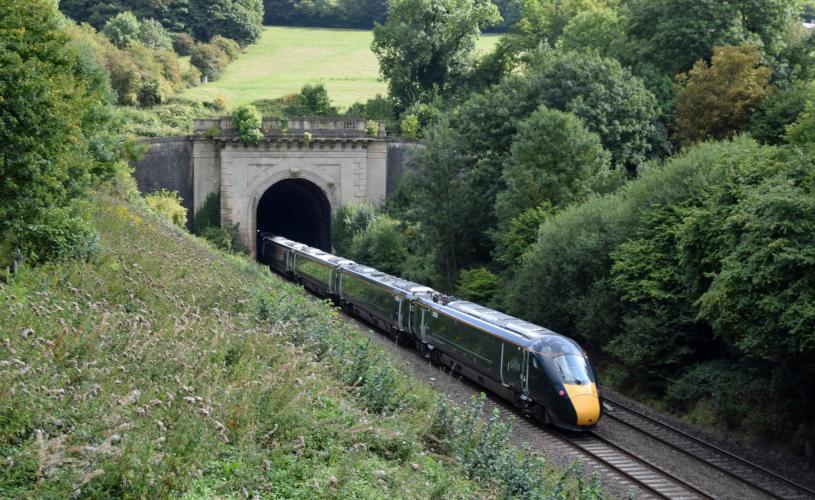
Image - GWR train at Brunel's Box Tunnel
Bristol Temple Meads
Brunel also designed the current Temple Meads station, which opened in 1874, to add capacity for the popular routes across the region. Brunel had a vision that passengers would be able to purchase one ticket at London Paddington and travel from London to New York, changing from the Great Western Railway to the Great Western steamship to cross the Atlantic.
Look out for the bronze Isambard Kingdom Brunel statue by John Doubleday near the front entrance of Temple Meads Station, which was originally erected in the city centre in 1982, with a twin sculpture placed at Paddington Station. The statue was moved to its current position on the bicentenary of Brunel's birth in 2006.
If you're arriving into Temple Meads on a Tuesday or Thursday, its worth checking out Temple Quay Market for some great lunch options from local street food traders. If you're looking for a hotel within easy reach of the station, book into the Hilton Garden Inn Bristol City Centre, DoubleTree by Hilton Bristol City Centre, or the Leonardo Hotel.
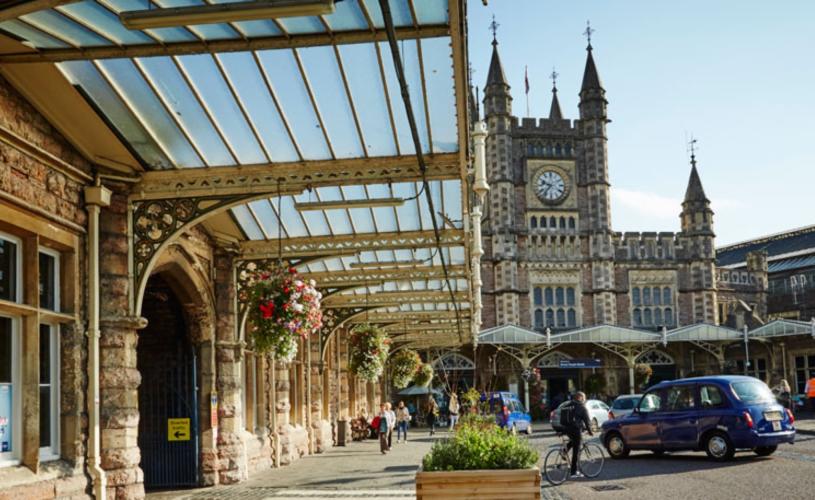
Image - Bristol Temple Meads Station
Harbour House
A short walk from Temple Meads down the Harbourside, this waterfront restaurant is housed in a building formerly designed as a prototype transit shed by Brunel. It is even rumoured to have been used by him as his boathouse!
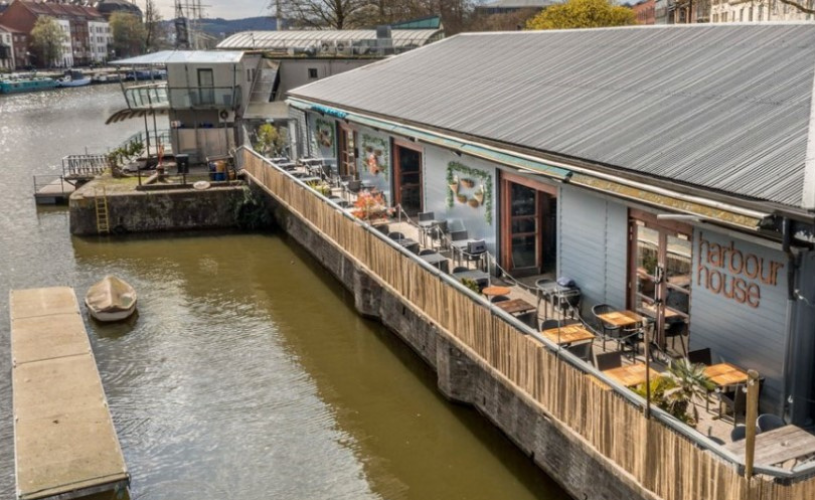
Image - Harbour House
Queen Square
Just a couple of minutes' walk from Harbour House is Queen Square. Now a scenic and peaceful park, this Georgian square was once the site of destruction during the Bristol Riots of October 1831. Brunel was enlisted as a special constable and helped to salvage precious items from the Mansion House, which was later looted and destroyed by fire during the riots.
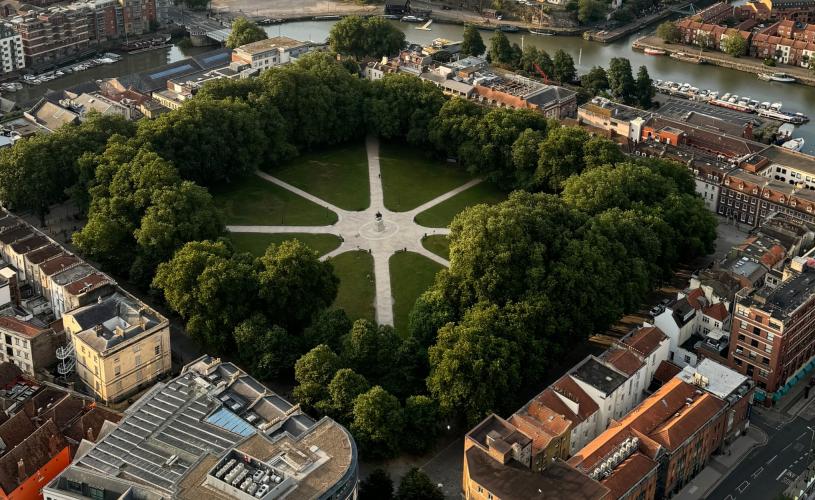
Image - Queen Square
M Shed
From Queen Square, head towards Prince Street and across Prince Street Bridge, where you'll see the harbourside cranes and Bristol's local history museum, M Shed, on your right.
On the side of the museum on Princes Wharf closest to the swing bridge, you'll see a small black plaque halfway up the wall. This plaque commemorates the launch of the SS Great Western from Princes Wharf on 19 July 1837. The Great Western was the first steamship built for regular transatlantic trade, and made it first voyage from Bristol to New York on 8 April 1838, arriving on 23 April.
The SS Great Western was also constructed close to this spot at the shipyard of Patterson & Mercer in the West Wapping dry dock.
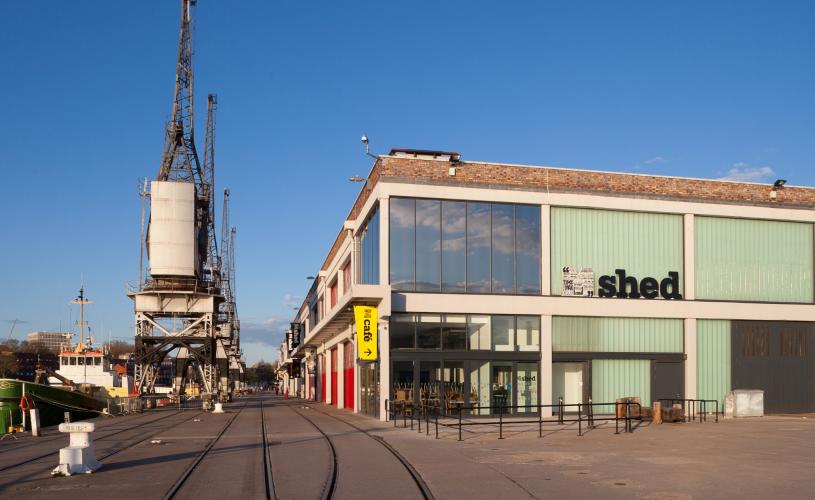
Image - M Shed
Brunel's SS Great Britain
Follow the harbour walk along the quayside from M Shed, and after around ten minutes, you'll come to Brunel Square and the magnificent Brunel's SS Great Britain.
Launched in 1843, the SS Great Britain is considered the world's first modern ship, due to it being built of metal rather than wood, powered by a 1000hp engine rather than wind or oars, and driven by a propeller rather than a paddle wheel. The largest and most efficient ship of its time, her maiden voyage was from Liverpool to New York in August 1845, taking just 14 days to make the crossing.
During her working life, Brunel's SS Great Britain circumnavigated the globe 32 times, starting as a luxury Atlantic liner as part of Brunel's plan for transatlantic travel, and going on to be an emigrant ship, a troop ship, and then a cargo clipper.
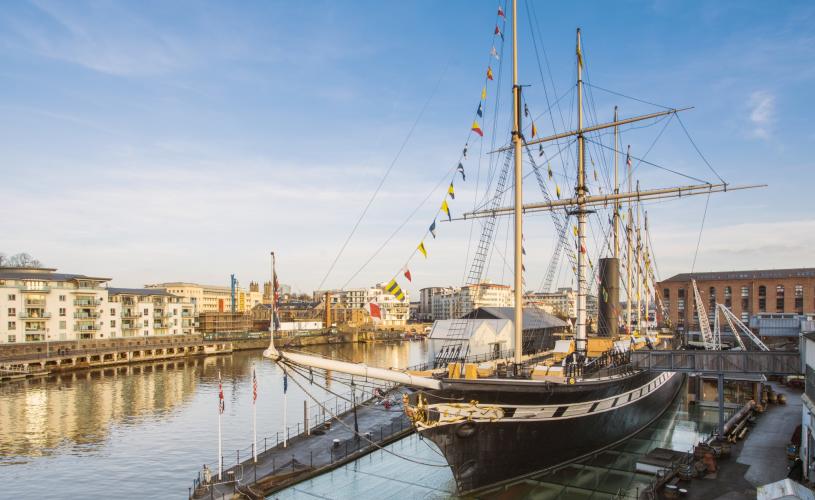
Image - Brunel's SS Great Britain
Your ticket for Brunel's SS Great Britain is valid for unlimited trips for a whole year, so if possible, we'd recommend taking your time in each section:
- The Ship - walk around the lovingly-restored ship, seeing what life would have been like for Victorian passengers
- Dry Dock - walk around the hull of the ship and take a closer look at the innovative Screw Propeller
- Dockyard Museum - travel through the various ages of the ship, from transatlantic trips to being salvaged from the Falkland Islands
- Historic Dockyard - see what the dockyard would have looked like in the Victorian era, with cranes, barrels and more
- Being Brunel - learn more about the genius of Isambard Kingdom Brunel in this interactive museum
Brunel's SS Great Britain also runs regular Harbourside walking tours with Brunel, or you can enjoy a sightseeing tour with Bristol Packet Boat Trips with commentary from Brunel himself!
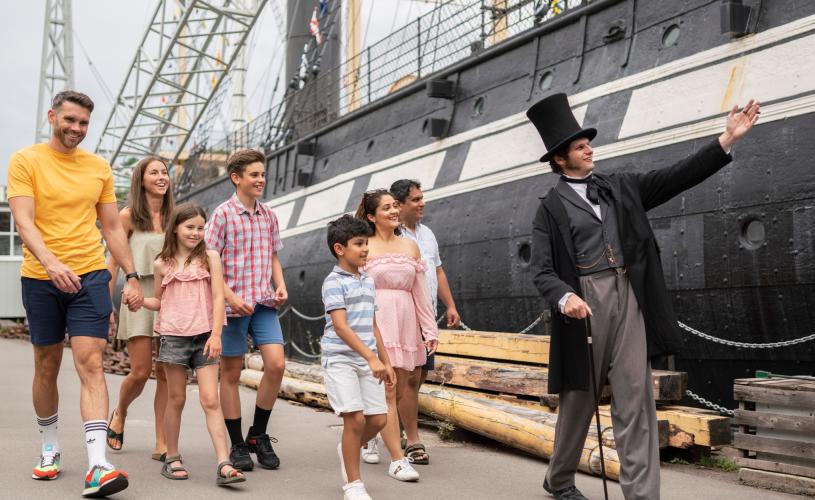
Image - Mr Brunel at Brunel's SS Great Britain
If you really want to get inside the mind of Brunel, make time to explore the exhibits and interactive activities at Being Brunel. Wander around a recreation of Brunel's Dining Room and work out which dinner guests to invite to a party, or take a seat in his Grade II listed Dock Office to see what he's working on. Watch as the Great Western Railway unfolds in front of you in the main exhibition hall, challenge yourself to draw a perfect circle on board a shaky carriage, or watch iconic scenes from his life.
The museum also contains some of Brunel's most prized possessions, including his sketchbook, cigar case and even his diary. Other important exhibits in Being Brunel include possibly the most famous photograph of Brunel. Taken in 1857, just two years before he died, you can see Brunel posing in front of the launching chains of the SS Great Eastern, another one of his ships.
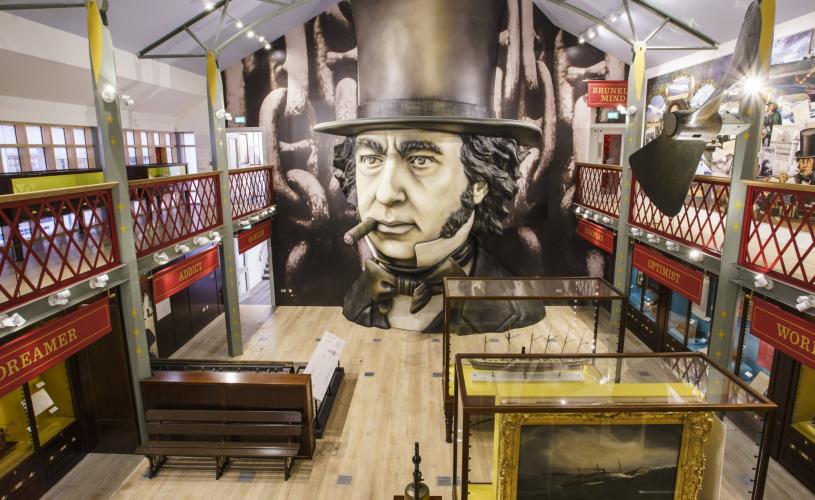
Image - Being Brunel at Brunel's SS Great Britain
The Brunel Institute
With around 75,000 items in its collections, the Brunel Institute, located next to the SS Great Britain Visitor Centre, is home to one of the world’s leading maritime collections and is possibly the most significant collection of Brunel materials anywhere. The oldest item in their collections is a 1703 book of naval tracts, and you can also view historic photographs and passenger diaries, as well as sketches and letters by Isambard Kingdom Brunel.
The Institute is free to access and is open to everyone; you do not need a ticket to the museum to access the library and collections, but you do need to make an appointment in advance to visit. Group tours can also be booked directly, which include a tour with one of the curators to talk through items from the collection.
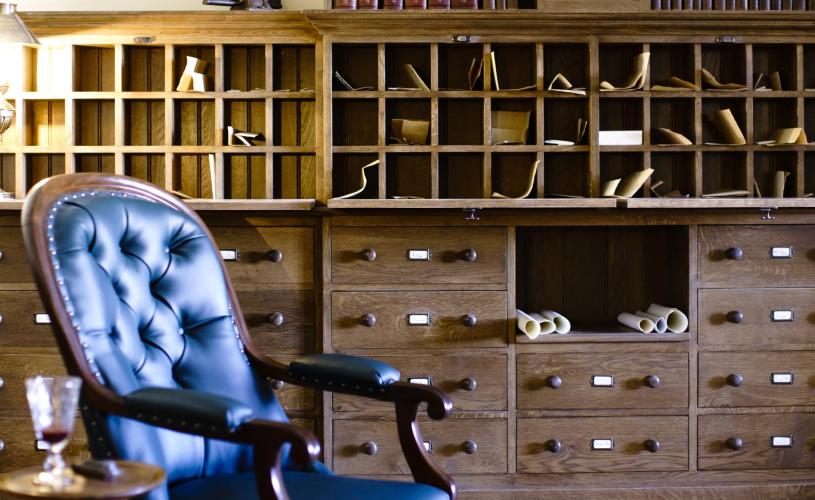
Image - Replica of Brunel's Duke Street office at Being Brunel
Underfall Yard
Continue a little further along the harbourside, and around a 15-minute walk from Brunel's SS Great Britain is Bristol's historic boatyard, Underfall Yard.
Not content with designing tunnels, bridges, ships, railways, and impressive buildings, Brunel was also instrumental in the design of Bristol's groundbreaking Floating Harbour, which saw the city's historic docks completely redesigned in the 1800s to accommodate larger ships.
Brunel was asked in the 1830s to write a report for the Bristol Docks Company to suggest improvements and submitted his findings in 1843. Over the next 15 years, his improvements were put into practice, including an underfall dam and dredgers to remove the silt. You can see the complex engineering that went into the Floating Harbour in Underfall Yard Visitor Centre, where you'll also find a model of a sluice paddle that was used in the underfall in the Boiler House.
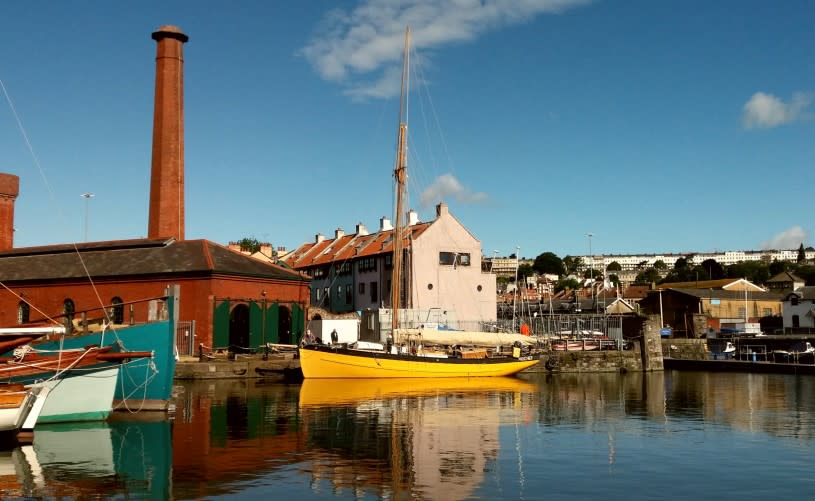
Image - Underfall Yard
Brunel's Other Bridge
From Underfall Yard, head around the corner to Cumberland Basin, where you'll find two of Brunel's lesser-known creations next to each other.
Between the two main locks at the end of Cumberland Basin is the world’s first wrought-iron tubular swing bridge, known locally as 'Brunel's Other Bridge', and opened in 1849. The bridge sits next to South Entrance Lock (also known as 'Brunel's Lock'), which was also designed by Brunel and features several unique features for the time, such as single-lead wrought-iron gates. The lock was out of use by 1886, while the swing bridge was made redundant in the 1960s with the modernisation of the roadways around the Cumberland Basin.
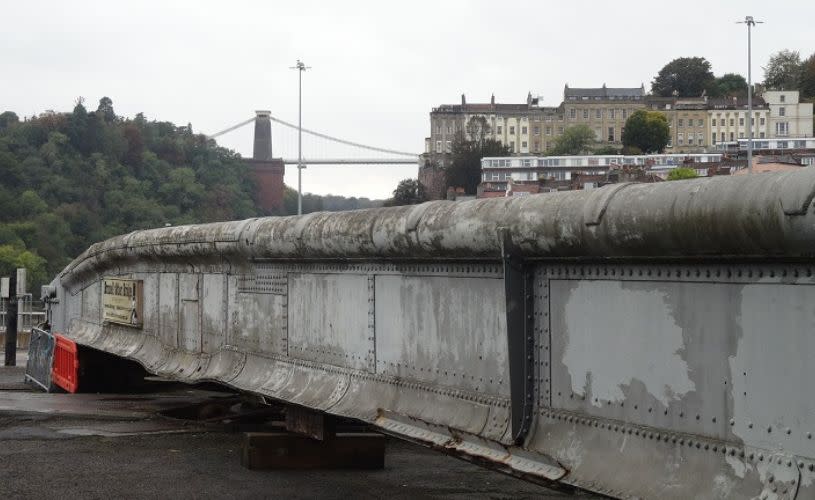
Image - Brunel's Swivel Bridge, credit Brunel's Other Bridge
Clifton Suspension Bridge
From Cumberland Basin, you can look west along the River Avon and take in the view of Bristol's best-known icon, the Clifton Suspension Bridge.
Started in 1831 and completed in 1864, it had the longest span of any bridge in the world at the time of construction, and was actually Brunel’s first major commission when he was just 24 years old, although it was not completed until after his death.
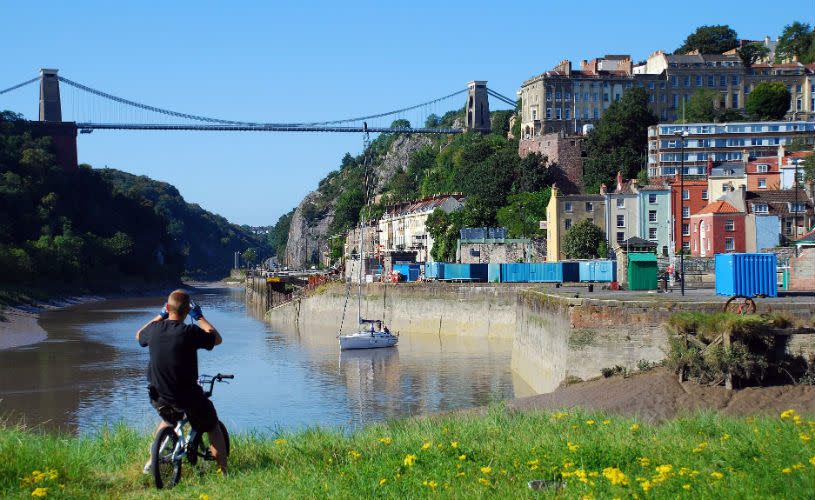
Image - View of Clifton Suspension Bridge from the Cumberland Basin
If you want to see the bridge up close or walk across it and visit the Clifton Suspension Bridge Museum, you can cross the Cumberland Basin via the locks, walk up Granby Hill, and head into Clifton.
At the top of Granby Hill, turn left onto Wellington Terrace, where you'll see the impressive Royal York Crescent above you. Continue along Wellington Terrace past the Hotel du Vin Bristol Avon Gorge, and you'll come to the lookout point for the bridge, where you can then continue up the hill to cross the bridge itself.
We also recommend stopping into Clifton Observatory while you're in the area for more local history and stunning views from the 360 Cafe roof terrace.
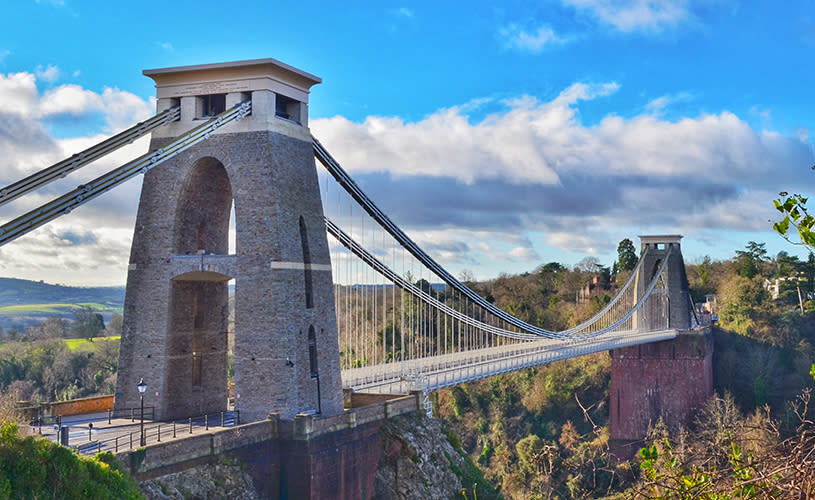
Image - Clifton Suspension Bridge
Other Brunel creations in and near Bristol:
-
Brunel House near Bristol Cathedral was built in the late 1830s to the designs of Brunel and R.S.Pope. It was originally intended to be The Royal Western Hotel, providing accommodation for rail travellers en route from London to New York.
-
The Box Tunnel just outside Bath was the longest railway tunnel in the world when it was built. Legend has it that the rising sun shines all the way through the 2.9km tunnel on Brunel's birthday every year (9 April).
-
The Royal Hotel in Bath, opened in 1846 next to the railway station, was designed by Brunel.
-
Swindon Steam Railway Museum is based in Brunel's former Swindon Works and has many artefacts from Brunel's time on the Great Western Railway.
Read more:
